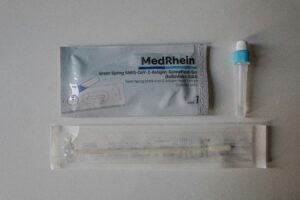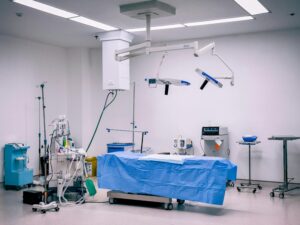The medical device industry is undergoing rapid change. Global trade shifts, supply chain risks, and cost pressures are prompting OEMs to reassess their production locations. For many, Mexico has become a strategic hub for efficiently manufacturing and exporting medical devices.
Whether you are an established healthcare brand or a medical device OEM preparing to scale, understanding the regulatory, logistical, and operational realities of exporting from Mexico can be the difference between smooth market entry and costly delays.
With the right partner, manufacturers can navigate compliance requirements, optimize logistics, and access U.S. markets faster. At the same time, it maintains the quality standards demanded by global healthcare providers.
Why MedTech Companies Are Shifting Manufacturing to Mexico?
For decades, Asia has been the default manufacturing destination for cost-conscious OEMs seeking to export medical devices worldwide. However, the tides have shifted. Geopolitical tensions, rising tariffs, fluctuating freight rates, and pandemic-related port congestion have made long-distance supply chains less reliable.
In contrast, Mexico offers a blend of cost efficiency and geographic proximity that is difficult to match. With over 3,000 companies in its medical device manufacturing ecosystem, Mexico provides both scale and specialization.
Skilled labor, competitive wages, and advanced infrastructure enable OEMs to produce high-quality devices, reducing transportation times to just days. The nearshoring trend isn’t just about speed. It’s about control.
Consider this: a product manufactured in Asia might take 25–40 days to reach a U.S. distribution center. From Mexico, the same shipment can arrive within 24–72 hours. For devices with strict shelf-life requirements or those intended for urgent medical needs, that difference is critical.
Binational Operations for Faster, More Reliable Delivery
Speed alone isn’t enough. Reliability is the foundation of manufacturer’s reputation. This is where binational operations—such as RexMed’s footprint in Ciudad Juárez, Mexico, and El Paso, Texas—play a pivotal role.
Having facilities on both sides of the border eliminates many of the uncertainties that plague global shipping. When an order is ready, same-day delivery to U.S. customers is often possible. OEM logistics benefits from coordinated customs processing, experienced cross-border staff, and established transportation routes.
For example, an OEM producing surgical instruments in Ciudad Juárez can complete manufacturing in the morning and have the shipment in an El Paso warehouse that same afternoon, ready for next-day distribution to hospitals nationwide.
This agility enables companies to meet urgent orders, manage seasonal surges, and prevent revenue losses associated with backorders. Moreover, binational teams bring cultural and operational alignment. They speak the same technical language and understand documentation requirements on both sides of the equation.
Compliance Made Easier with Local Regulatory Knowledge
In medical device manufacturing, speed means produce without compliance. Products must meet stringent safety, performance, and labelling requirements before they can be sold in target markets. Strong regulatory compliance processes in Mexico reduce the risk of shipment rejections and speed market entry.
In Mexico, the regulatory body overseeing medical devices is the Federal Commission for the Protection against Sanitary Risk (COFEPRIS). For U.S.-bound products, FDA clearance is often necessary before import. Understanding how these two systems align is essential for avoiding delays.
RexMed’s dual-market expertise allows OEMs to navigate these complexities with confidence. The company collaborates directly with COFEPRIS to ensure that its manufacturing processes comply with Mexican standards. While also preparing documentation and testing protocols required by the FDA.
Key compliance considerations include:
- Product classification under Mexican and U.S. frameworks, which can differ in terminology and risk categories.
- Technical documentation such as design files, material safety data, and manufacturing process validations.
- Labelling requirements to ensure information is accurate, bilingual, and in compliance with destination market laws.
- Import/export permits that must be obtained before cross-border shipment.
By managing regulatory compliance in Mexico in conjunction with U.S. requirements, OEMs minimize the risk of customs holds, rejected shipments, or retroactive fines.
Flexible Production for Shorter Cycles and Custom Orders
Medical technology evolves quickly, and so do market demands. OEMs and healthcare institutions often need to produce small batches for clinical trials, prototype new designs for regulatory submissions, or adapt existing devices to meet new specifications.
RexMed’s production model supports this agility. Instead of relying on high-volume-only manufacturing, the company offers short production runs, rapid tooling adjustments, and dedicated prototyping services. This flexibility shortens the product development cycle, enabling OEMs to enter markets more quickly.
Consider an OEM preparing to launch a new diagnostic device. Traditional manufacturing contracts often require a minimum order in the thousands, which can delay time-to-market while inventory remains unused.
In contrast, small-batch production in Mexico allows the company to start with a few hundred units, gather feedback from clinicians, and scale production based on real-world performance. This adaptability also supports custom orders for specialized healthcare providers.
Documentation: The Backbone of Smooth Exports
Even the most efficiently manufactured product cannot move without proper documentation. When exporting medical devices, accuracy and completeness in paperwork are non-negotiable.
OEMs must prepare and verify a range of documents, including:
- Commercial invoices with detailed product descriptions and HTS (harmonized tariff codes).
- Certificates of origin confirming manufacturing location.
- Packing lists that match physical shipment contents.
- Regulatory certificates such as FDA clearance letters or COFEPRIS registrations.
Errors in documentation can cause customs delays, additional inspections, or even shipment returns. RexMed’s export specialists maintain up-to-date templates and checklists, ensuring every shipment leaves with the correct paperwork in place.
RexMed as a Strategic Nearshore Partner
Since 1990, RexMed has built its reputation on precision manufacturing, reliable delivery, and a deep understanding of the market. As a contract manufacturer, the company combines decades of experience with the infrastructure to handle projects of any scale.
Partnering with RexMed offers OEMs several advantages:
- Bilingual communication that eliminates misunderstandings in technical or regulatory discussions.
- Dual-market knowledge that keeps products compliant in both Mexico and the United States.
- Proven logistics networks for faster, predictable deliveries.
- Scalable production for both mass manufacturing and specialized orders.
For OEMs navigating the challenges of international production, RexMed acts as both a manufacturing partner and a strategic advisor, helping clients anticipate challenges before they arise.
Discover how RexMed can help streamline your medical device export process by visiting our products page. For official regulatory guidance, refer to the U.S. Food and Drug Administration Medical Devices section.






